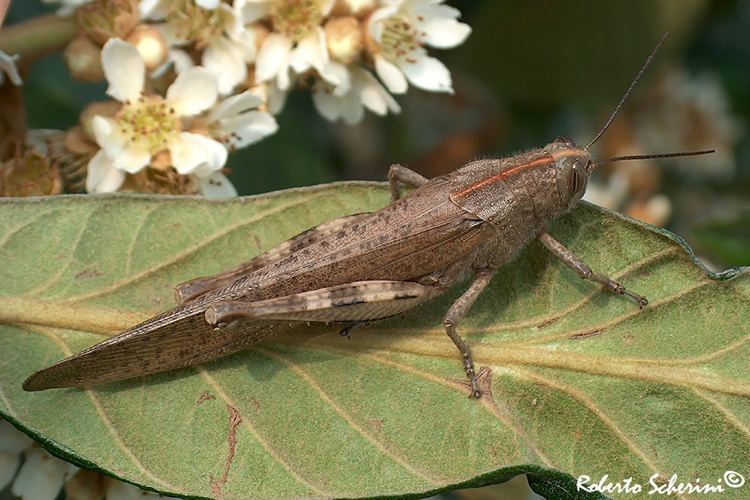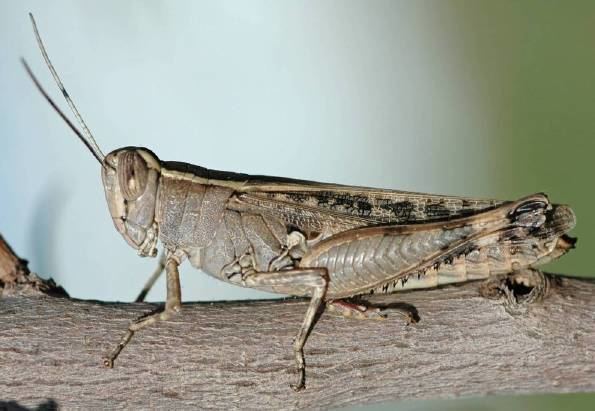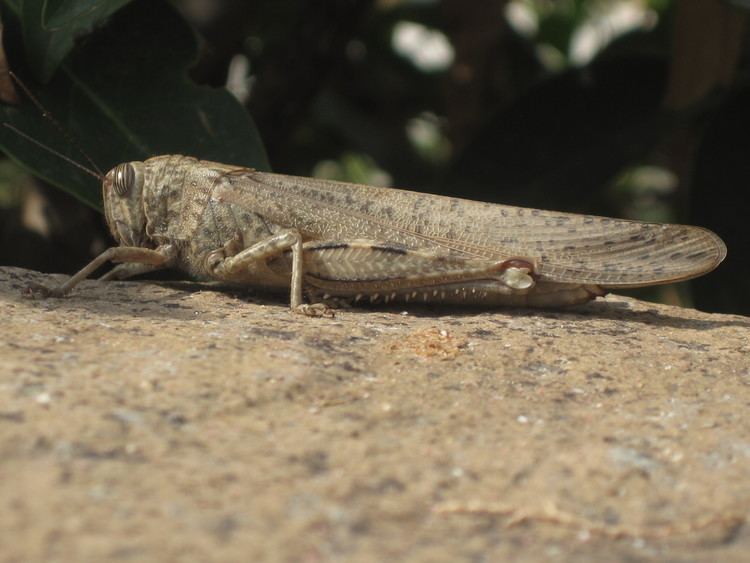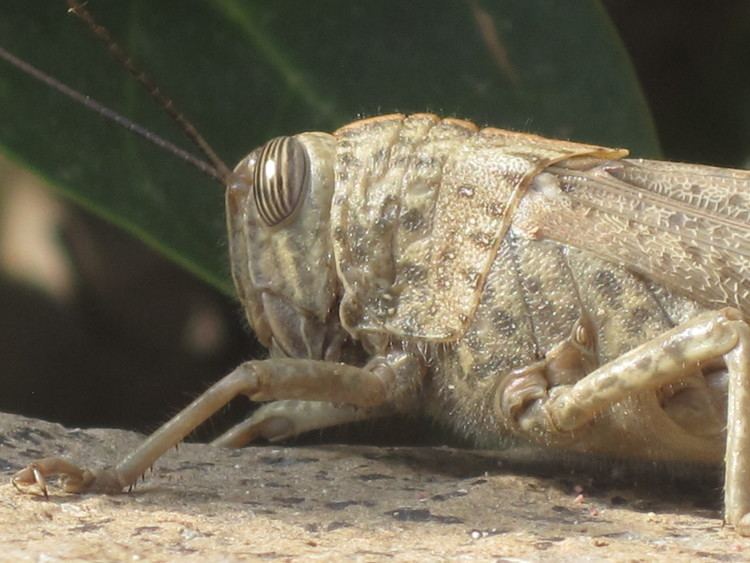Rank Species | Subphylum Hexapoda Genus Anacridium | |
 | ||
Similar Anacridium, Calliptamus, Oedipoda, Oedipoda caerulescens, Calliptamus italicus | ||
Anacridium aegyptium, the 'Egyptian Locust', is a species belonging to the family Acrididae subfamily Cyrtacanthacridinae.
Contents
- Grossa locusta agita le ali big locust shakes its wings anacridium aegyptium
- Subspecies
- Synonyms
- References
It is present in most of Europe, in the 'Afro-tropical ecozone', in eastern Palearctic ecozone, in the Near East and in North Africa.

It is one of the largest European grasshoppers. The adult males grow up to 30–55 millimetres (1.2–2.2 in) long, while females reach 65–70 millimetres (2.6–2.8 in) of length.

Their body is usually gray, brown or olive coloured, the antennae are relatively short and robust. Tibiae of the hind legs are blue, while femora are orange. The hind femora have characteristic dark marks. It is easily identifiable also by the characteristic eyes with vertical black and white stripes. The pronotum shows a dorsal orange stripe and several white small spots. The wings are clear with dark marks.

This species is folivore, essentially feeding on leaves. It is a solitary species, not harmful to crops. Adults can mainly be encountered in August and September in warm and dry habitats.

After mating these grasshoppers overwinter as adults. Spawning occurs in spring just under the soil surface and the nymphs appear in April. The nymphs have the appearance of the adults, their color varies from yellow to bright green and ocher and the wings are absent or small, as they are gradually developed after each molting.

